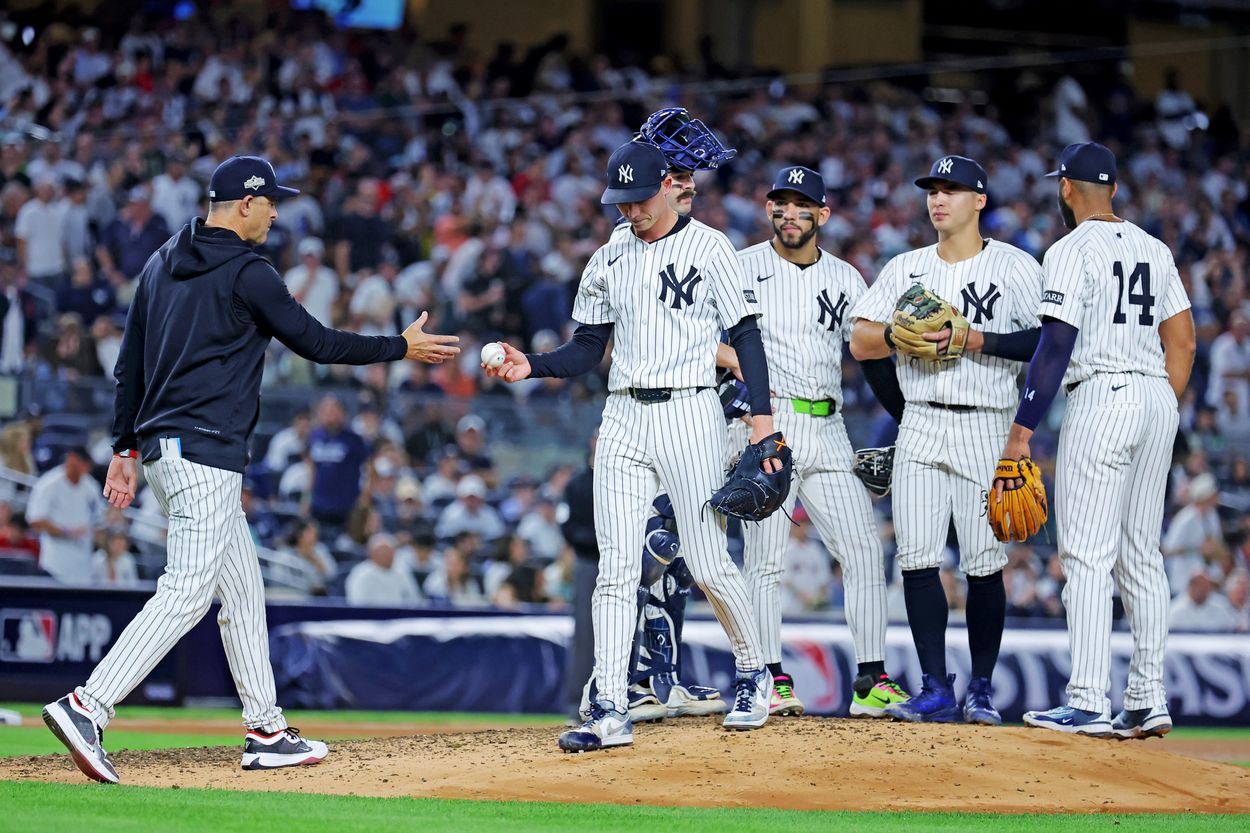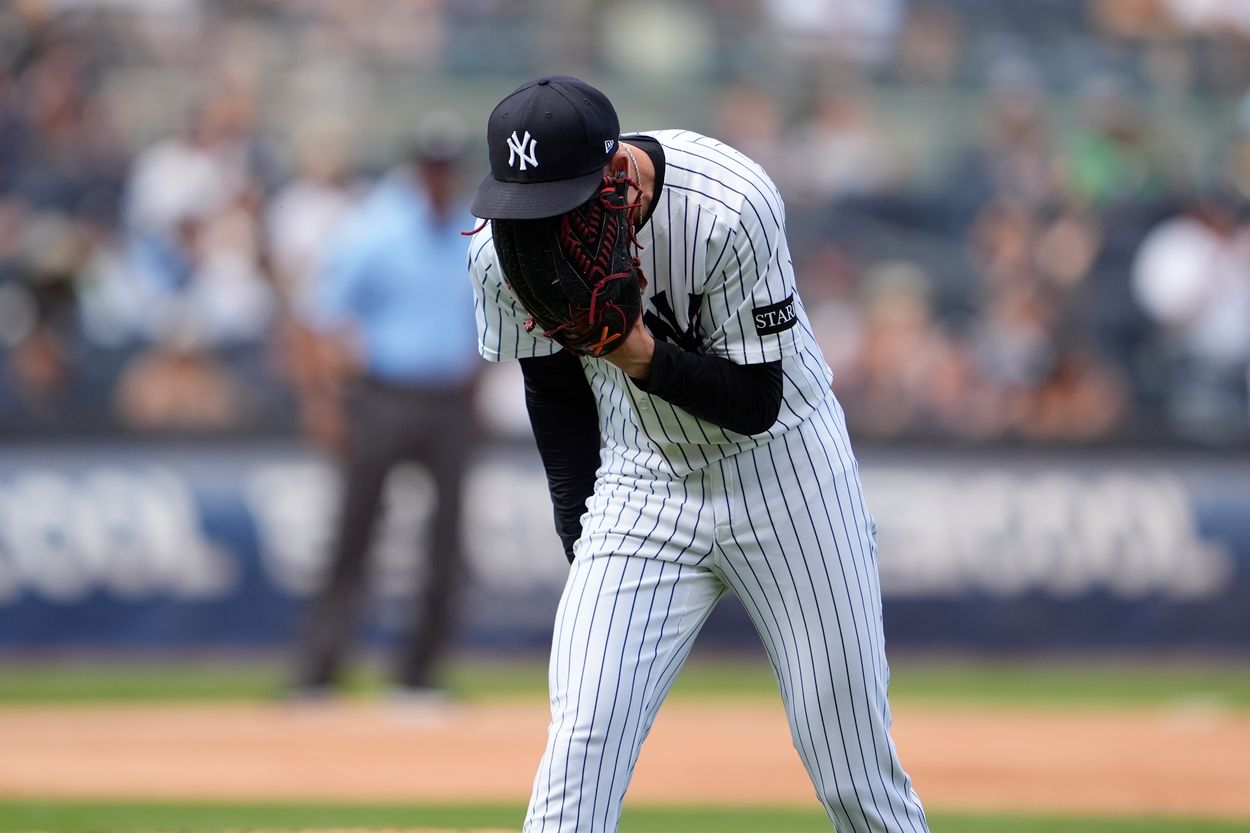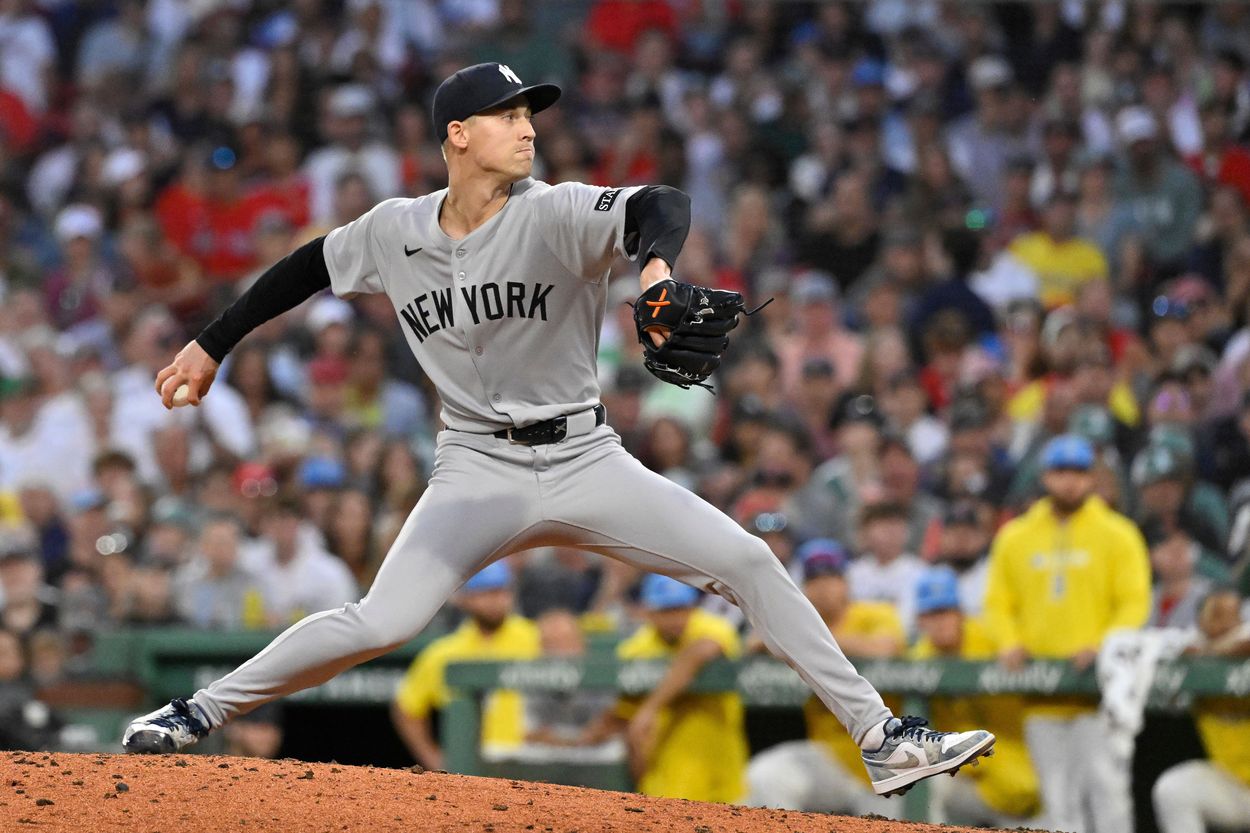
The New York Yankees built their postseason success last year on pitching depth and relentless poise, but this October has painted a different picture. For right-handed reliever Luke Weaver — once one of the most dependable arms in the bullpen — the fall from grace has been swift and hard to watch.
In 2024, Weaver was automatic. He was Aaron Boone’s late-game safety net, the pitcher who could stop rallies before they started and close innings under pressure. But fast forward a year, and that version of Weaver feels like a distant memory. His 2025 postseason numbers tell a brutal story: two appearances, zero outs recorded, and chaos every time he’s taken the mound.
Against Toronto in Saturday’s ALDS opener, it took only minutes for things to spiral. Weaver walked the first batter he faced, surrendered a single, then watched another laser drive in a run before Boone was forced to pull the plug. The bullpen door hadn’t even closed before the Blue Jays turned the inning into a mess.

Fernando Cruz entered to limit the damage, but by then, the floodgates were open. Toronto’s contact-oriented lineup feasted on mistake pitches, using disciplined situational hitting to tack on three more runs. The Yankees, once so confident in their relief corps, suddenly looked like a team with no answers.
From postseason hero to liability
It’s almost hard to reconcile the two versions of Luke Weaver. Last October, he was the Yankees’ postseason iron man — posting a microscopic 1.76 ERA across 15.1 innings while carving up lineups with precision. Every time Boone called his number, Weaver delivered.
This season, though, has been a tug-of-war between promise and inconsistency. Across 64.2 innings in 2025, he posted a 3.62 ERA with 10.02 strikeouts per nine — decent on paper, but far from dominant. His command wavered, and his margin for error evaporated.
Still, the Yankees hoped his playoff pedigree would carry over. Instead, his first two outings this postseason have been a nightmare, marked by missed spots and a visible loss of confidence. Against Boston in the Wild Card opener, Weaver faced a similar fate — two hits, two earned runs, and an early exit. The rhythm and aggression that defined him last fall just haven’t resurfaced.
Searching for answers in a deep bullpen
New York’s bullpen, once a point of pride, now looks overextended. With Weaver faltering, Boone has had to reshuffle his high-leverage options. Devin Williams and David Bednar are his go-to options now.
The Yankees’ postseason path has always depended on the bullpen — the group designed to shorten games and protect narrow leads. Without reliability in those middle innings, everything else starts to wobble.
Weaver’s regression has amplified that problem. His fastball command is shaky, his changeup isn’t biting like last year, and hitters are squaring him up earlier in counts. What was once a weapon has become a liability, forcing Boone into early decisions that tax the rest of the staff.

What comes next for Luke Weaver
Weaver’s postseason meltdown comes at the worst possible time — just as he’s set to hit free agency. A year ago, he could’ve written his own ticket. Now, he’s fighting to prove he still belongs in high-leverage situations at all.
Ironically, this slump could keep him in pinstripes. With his market value dipping, the Yankees may see an opportunity to retain him on a cheaper deal, banking on his 2024 form returning with a reset offseason.
But for now, the numbers don’t lie. Luke Weaver — the pitcher who once helped carry the Yankees through October — has become the weak link they can’t seem to hide. And in playoff baseball, those weak links rarely stay quiet for long.
